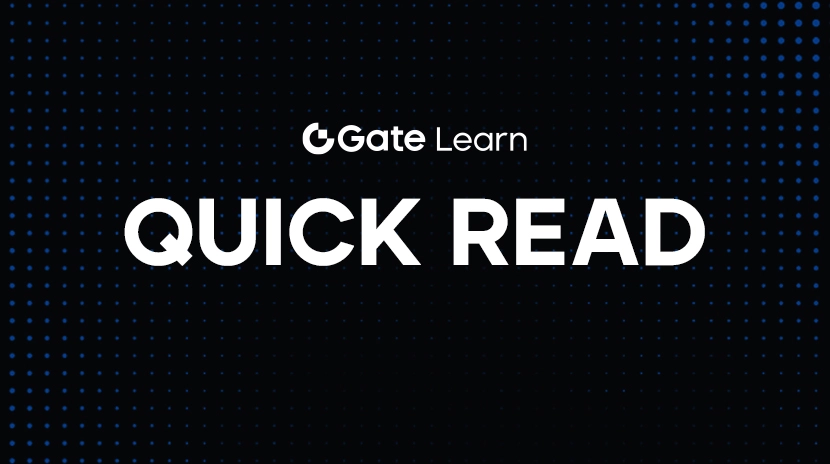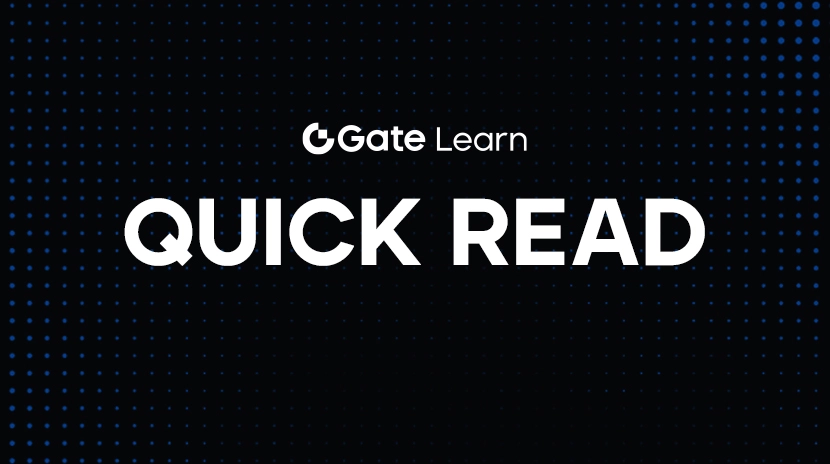Що означає DeFi?
1. Основи DeFi
У швидкозмінному фінансовому світі DeFi (Децентралізована фінансова) робить хвилі. DeFi представляє собою революційний підхід до традиційної фінансової сфери, використовуючи технологію блокчейн для створення більш відкритої, доступної та прозорої фінансової екосистеми.
У своїй основі DeFi має на меті усунути потребу у традиційних фінансових посередниках, таких як банки, брокери та клірингові центри. Замість цього він покладається на смарт-контракти — самовиконувані контракти з умовами, які безпосередньо записані в коді. Ці смарт-контракти зберігаються на блокчейні, розподіленому реєстрі, який забезпечує прозорість, незмінність та безпеку.
Яскравим прикладом DeFi у дії є MakerDAO, новаторський проєкт у просторі DeFi. У системі MakerDAO користувачі надають заставу криптовалютам, таким як Ethereum, для створення стейблкоїна під назвою DAI. Весь процес автоматизований за допомогою смарт-контрактів, минаючи традиційні фінансові установи для оцінки кредитоспроможності та розподілу коштів. Після того, як активи стають заставою, смарт-контракти генерують DAI на основі заздалегідь визначених правил. Погашення та погашення заставних активів також обробляються автоматично, демонструючи типову модель DeFi, що працює на основі смарт-контрактів.

Джерело зображення:https://docs.makerdao.com/getting-started/maker-protocol-101
2. Ключові компоненти DeFi
(1) Децентралізовані біржі (DEXs)
Децентралізовані біржі (DEXs)
Децентралізовані біржі усувають потребу в централізованих посередниках за допомогою алгоритмів автоматизованого ринкового мейкеру (AMM), щоб сприяти торгівлі. У цій моделі постачальники ліквідності вносять кошти до ліквіднісних пулів, які, як правило, складаються з парних криптовалют, таких як Ethereum (ETH) та Tether (USDT). Співвідношення активів у пулі визначає ціну торгівлі, відповідно до математичних формул, таких як модель постійного продукту ринкового мейкера.
Коли трейдер ініціює угоду (наприклад, обмін ETH на USDT), система автоматично розраховує обмінний курс на основі поточних відсотків активів у пулі за допомогою алгоритму AMM. На відміну від централізованих бірж, DEX надають користувачам повний контроль над їх активами. Користувачі зберігають свої приватні ключі протягом усього процесу торгівлі, що значно зменшує ризик недобросовісного використання активів або взлому.

Джерело зображення:https://dune.com/hagaetc/dex-metrics
Uniswap, провідна DEX, вперше впровадила модель автоматизованого ринкового мейкера (AMM) на блокчейні Ethereum, пропонуючи простий, але ефективний інтерфейс торгівлі, що підтримує широкий спектр криптовалютних активів. Її доступність привернула велику користувацьку базу та сприяла залученню розробників. Тим часом, Curve спеціалізується на торгівлі стейблкоїнами, вирішуючи проблеми злипу за допомогою оптимізованих алгоритмів. Використовуючи унікальний механізм зваженого середнього, Curve динамічно налаштовує торгові ваги з урахуванням ліквідності та волатильності цін, що дозволяє користувачам обмінювати стейблкоїни за майже оптимальними цінами. Це підвищує як ефективність торгівлі, так і користувацький досвід.
(2) Платформа кредитування
Платформи кредитування DeFi дозволяють пір-у-пірне кредитування без участі традиційних банків. Вкладники блокують свої криптовалютні активи в кредитні фонди, заробляючи відсотки в залежності від ринкового попиту та пропозиції. Позичальники повинні забезпечити криптовалютні активи заставою, яка зазвичай перевищує суму кредиту, для забезпечення фінансової безпеки. Смарт-контракти автоматично вирішують виплату кредиту, повернення коштів та вивільнення застави.
У відміну від традиційних банків з фіксованими або напівфіксованими процентними ставками, платформи DeFi пропонують динамічні процентні ставки. Ці ставки коригуються в реальному часі на основі пропозиції та попиту на кошти в кредитному пулі. Коли коштів багато, ставки зменшуються, щоб заохотити позики; коли коштів мало, ставки збільшуються, щоб залучити більше вкладів.

Джерело зображення:https://foresightnews.pro/article/detail/60533
Aave виділяється своєю інноваційною функцією швидкого кредиту, яка дозволяє користувачам отримувати кошти миттєво без застави, якщо повернення та відсотки розраховуються протягом тієї ж самої транзакції у блокчейні. Це відкриває нові можливості для арбітражу та фінансової інновації, дозволяючи трейдерам та розробникам капіталізувати на різниці в цінах між децентралізованими біржами. Тим часом, Compound користується популярністю завдяки своєй прозорій моделі відсоткової ставки та широкій підтримці активів. Він сприяє позики та кредитуванню різних основних криптовалют, з простою системою розрахунку відсотків, яка дозволяє користувачам легко оцінити свій дохід або витрати на позику. Ця ясність допомагає користувачам приймати обґрунтовані фінансові рішення з впевненістю.

Джерело зображення:https://app.aave.com/
(3) Стейблкоін
Стейблкоїни призначені для підтримки стабільного співвідношення обміну з конкретною фіатною валютою або активом. Для стейблкоїнів, прив'язаних до долара США, існує три загальні механізми досягнення цієї стабільності. Перший тип є фіатним забезпеченням, наприклад, Tether (USDT), який забезпечений реальними резервами в доларах США. Кожен випущений USDT відповідає одному долару США, що зберігається на банківському рахунку, при цьому регулярні аудити забезпечують достатність резервів. Другий тип є криптозаставою, прикладом чого є DAI. Користувачі повинні надавати заставу Ethereum або іншим криптоактивам, а смарт-контракти регулюють пропозицію DAI на основі вартості цих забезпечених активів і коливань ринку. Цей механізм допомагає підтримувати прив'язку 1:1 до долара США. Третій тип – це алгоритмічні стейблкоїни, які не забезпечені матеріальними активами, а натомість покладаються на алгоритми смарт-контрактів для динамічного регулювання пропозиції. Випускаючи або спалюючи токени на основі ринкового попиту, ці стейблкоїни прагнуть підтримувати цінову стабільність. Яскравий приклад - Амплфорт.

Джерело зображення:https://dune.com/milkroadpro/stablecoins
Крім USDT та DAI, USD Coin (USDC) - це ще один широко визнаний стейблкоїн. Спільно випущений Circle та Coinbase, USDC підтримується резервними активами, які підлягають строгому регулюванню та регулярним аудитам, що гарантує високу прозорість. Порівняно з USDT, USDC пропонує більш жорстке виконання вимог, роблячи його переважним вибором для фінансових установ та корпоративних користувачів з вищими регуляторними вимогами. З іншого боку, DAI, завдяки своєму децентралізованому, криптозабезпеченому моделі, більше відповідає принципам Децентралізованих Фінансів (DeFi). Він надає користувачам більшу автономію та широко використовується в розширених фінансових операціях та взаємодіях зі смарт-контрактами в додатках DeFi.
Особливості DeFi
(1) Доступність
Децентралізовані фінанси (DeFi) доступні кожному, хто має підключення до Інтернету, надаючи фінансові послуги, такі як кредитування та торгівля, особам у країнах, що розвиваються, або тим, хто не має банківських рахунків. Це може сприяти фінансовій інклюзивності мільярдів людей у всьому світі. У регіонах зі слабкою фінансовою інфраструктурою, таких як частини Африка, де багато людей не мають доступу до традиційного банкінгу, DeFi пропонує альтернативу. Через мобільний доступ до Інтернету користувачі можуть брати участь у платформах DeFi-кредитування, надаючи невеликі суми криптовалюти, щоб захистити кошти для повсякденних витрат або бізнес-операцій. Усуваючи географічні обмеження та обмеження, пов'язані з обліковими записами, DeFi допомагає подолати розрив у фінансовій доступності та надає людям більші економічні можливості.
(2) Прозорість
Оскільки всі транзакції записуються в публічному блокчейні, Децентралізована фінансова сфера (DeFi) забезпечує повну прозорість, дозволяючи будь-кому переглядати історію транзакцій та операцій протоколу. Ця відкритість допомагає збудувати довіру серед користувачів. Наприклад, у проектах DeFi на блокчейні Ethereum користувачі можуть отримати доступ до детальних даних транзакцій - таких як мітки часу, суми та контрагенти - через дослідників блокчейну. Крім того, код смарт-контракту, який регулює ці протоколи, загальнодоступний для перегляду. Платформи, такі як Uniswap, роблять всі дані транзакцій повністю прозорими, дозволяючи користувачам перевірити, що угоди виконуються згідно з попередньо визначеними правилами, тим самим посилюючи вірусності та безпеці екосистеми DeFi.
(3) Нижчі витрати
Оскільки децентралізована фінансова сфера (DeFi) усуває потребу у посередниках, витрати на операції, як правило, нижчі, ніж у традиційній фінансовій сфері. Це особливо очевидно в міжнародних переказах, де DeFi пропонує швидшу та більш ефективну альтернативу традиційним банківським системам. Традиційні міжнародні перекази часто включають високі комісії та складний процес, що потребує участі кількох посередників, що призводить до довгих строків обробки. Натомість блокчейн-побудовані рішення DeFi для міжнародних переказів, такі як Ripple, використовують XRP як місткову валюту для полегшення переказів. Цей підхід значно зменшує комісії за операції та скорочує час переказу до кількох годин, що значно підвищує як ефективність, так і доступність міжнародних фінансових рухів.
Висновок: Виклики, що стоять перед DeFi
DeFi стикається з ключовими проблемами, такими як регуляторна невизначеність, ризики безпеки та волатильність ринку. З нормативної точки зору, DeFi працює в правовому ландшафті, що розвивається, де чіткі рамки все ще розробляються. Відсутність стандартизованих визначень для криптовалют і DeFi-проектів створює труднощі з дотриманням вимог для розробників і викликає занепокоєння щодо захисту користувачів. З точки зору безпеки, смарт-контракти залишаються вразливими до експлойтів. Незважаючи на постійне вдосконалення механізмів аудиту, великі інциденти, такі як злом DAO у 2016 році та атаки на менші кредитні платформи у 2022 році, демонструють, що порушення безпеки все ще трапляються. Що стосується волатильності, то властиві криптовалютам коливання цін впливають на активи DeFi. Наприклад, у криптозабезпеченому кредитуванні різке падіння ціни біткойна може спровокувати примусову ліквідацію, що вплине на ліквідність кредитної платформи та дестабілізує ширшу екосистему DeFi.
Пов’язані статті

Як високо може піднятися XRP? Як політика криптовалют Трампа вплине на майбутній тренд XRP

Як продати монету Pi: Посібник для початківців

Прогноз ціни Bitcoin на 2025 рік

Аналізуючи взлом Bybit за допомогою нападу Radiant Multi-Signature на прикладі

Які наступні покоління криптовалюти варто купити? Посібник на 2025 рік


